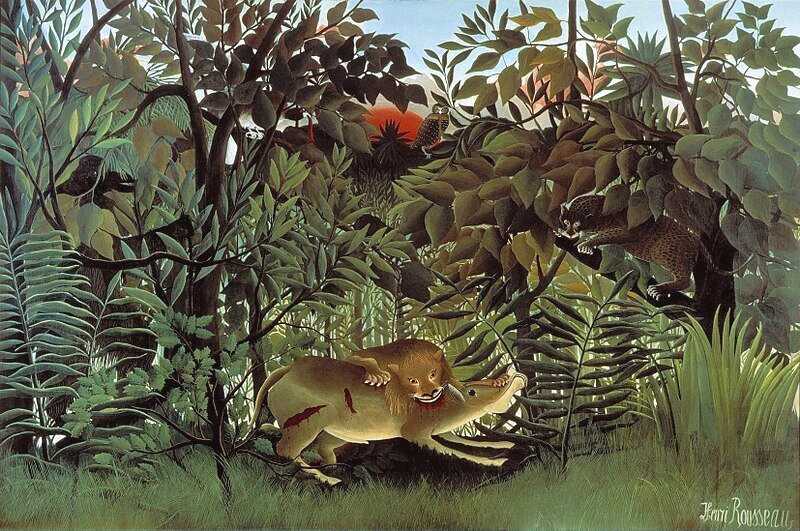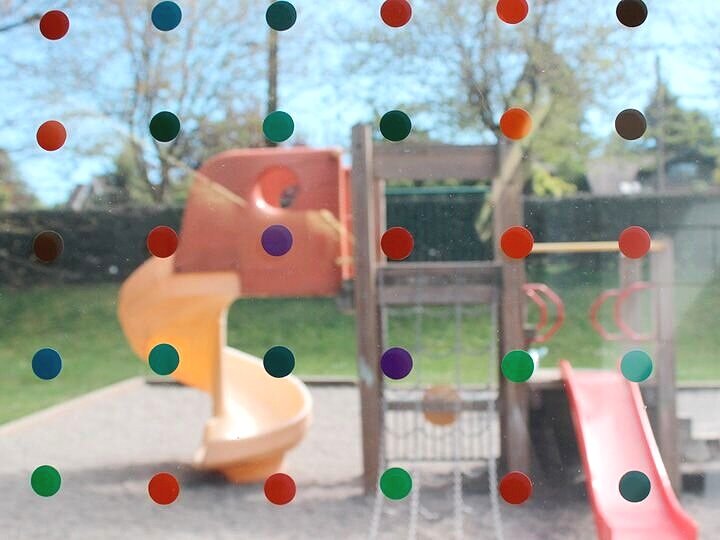

On The Hungry Lion Attacking an Antelope
The environment is like the unconscious. It would be preferred by some to remain in the background. Foregrounding it is like the return of a repressed sense of its agency. Henri Rousseau’s work is very much about the agency of the plant. His module, like Piet Mondrian’s grid, is the leaf. While never having visited a tropical region and instead using the natural history museum as a guide, the vast majority of Rousseau’s popular work depicts jungles scenes.

Seeing Spots
Birds face various obstacles in the urban environment. Windows are considered to be one of the largest sources of direct human-caused mortality for birds in North America. Glass, whether reflective or clear, is effectively invisible to birds. Birds collide with glass because they are trying to fly into the habitats they see beyond or reflected by the glass. It is estimated that across Canada, 16-42 million birds are killed annually by collisions with buildings [1].

Some Thoughts on Painting and Taxidermy
Taxidermy, which is the act of preparing, stretching and mounting animal skins for exhibit, can be seen as having metaphorical implications regarding my position as a still-life painter. As objects, both paintings and taxidermic animals are a type of skin stretched across a support to create a field of vision. This field, or surface, is then used to construct a series of visual reference points that give a viewer a sense of depth. In painting, this dimension is created through a sequence of brush marks that signify the way light engulfs an object in space. In the case of taxidermy however, depth is realized through a series of object relations, such as the connections between animal furs, glass eyes and rubber tongues.